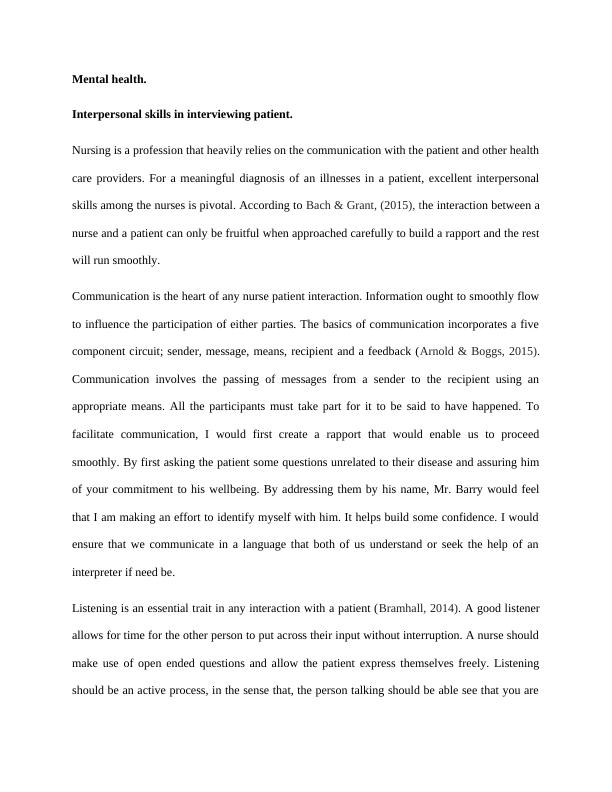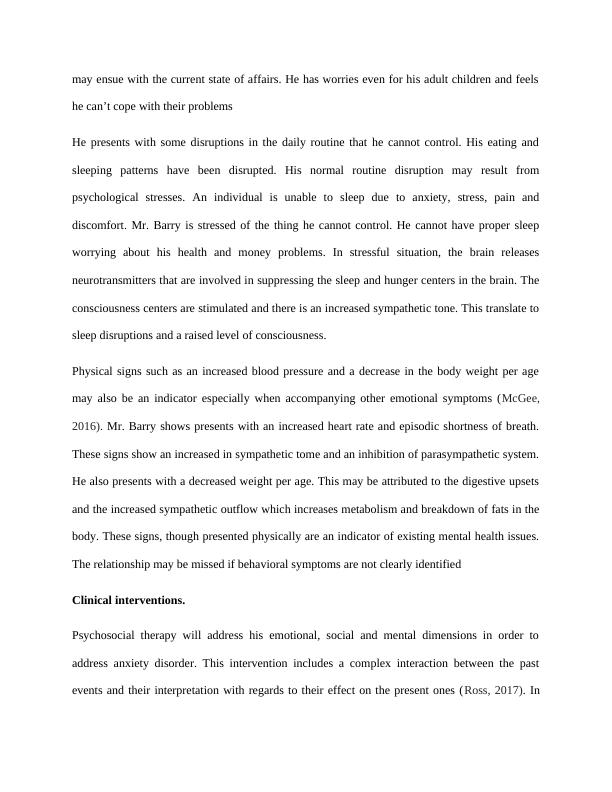Interpersonal Skills in Interviewing Patients for Mental Health Diagnosis
Four short-essay questions on a clinical scenario for a new graduate nurse, including discussing interpersonal skills, identifying signs and symptoms of mental health disorder, describing clinical interventions, and discussing medication information for a follow-up appointment.
7 Pages2247 Words264 Views
Added on 2023-06-13
About This Document
Nursing heavily relies on communication with patients and other healthcare providers. Excellent interpersonal skills among nurses are pivotal for meaningful diagnosis of illnesses. Communication is the heart of any nurse-patient interaction. Learn about the signs and symptoms of mental disorders, clinical interventions, and patient education. Read more on Desklib.
Interpersonal Skills in Interviewing Patients for Mental Health Diagnosis
Four short-essay questions on a clinical scenario for a new graduate nurse, including discussing interpersonal skills, identifying signs and symptoms of mental health disorder, describing clinical interventions, and discussing medication information for a follow-up appointment.
Added on 2023-06-13
ShareRelated Documents
End of preview
Want to access all the pages? Upload your documents or become a member.
Interpersonal Skills for Mental Health Interviews in a Mental Health Center
|10
|2055
|161
Mental Health Nursing - Assignment Sample
|7
|2368
|40
Mental Health: Interpersonal Skills, Symptoms, Clinical Interventions and Medication Information
|10
|2566
|114
Mental Health Nursing: Symptoms, Interventions, and Venflaxine
|12
|2417
|385
Strategies for Conducting Proper Assessment of Depression Symptoms
|10
|3109
|369
Case Study of Mrs. B: Communication Techniques, Major Depressive Episode with Psychotic Features, Nursing Interventions for Appetite and Sleep
|8
|1980
|358



